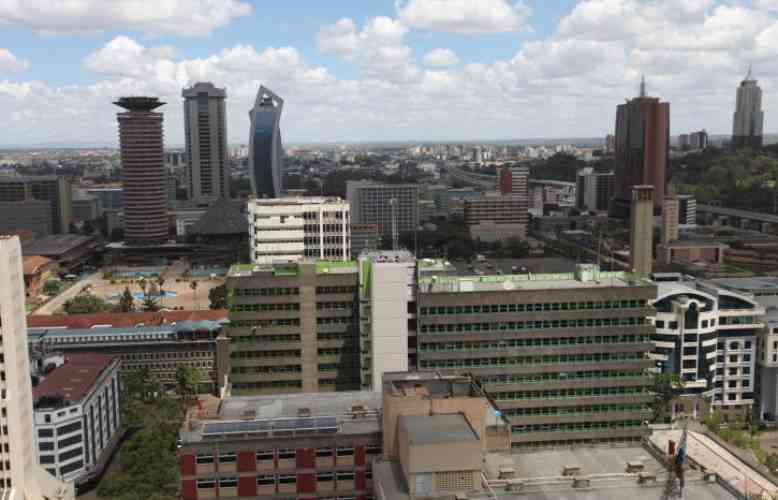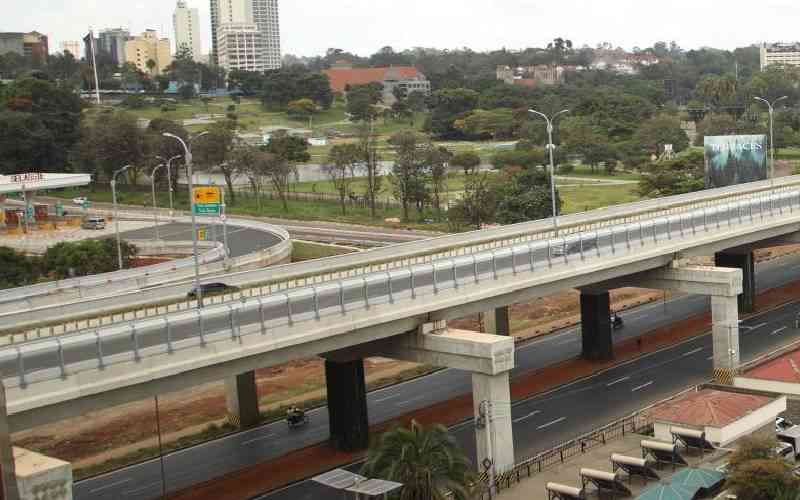The death of 23 people after a residential building collapsed in Huruma once more interrogates our urban planning. But hidden underneath such regular catastrophes is the social injustice lived out by the victims.
Social justice in cities is becoming increasingly crucial as the world undergoes rapid urbanisation. Many authorities are realising the unsustainability of urbanisation without equity.
Urbanisation distills the human innovation spirit and complex work patterns into a concentrated space. It mirrors the capitalist mode of production at its best.
This process can exclude many people from development, leading to social and environmental unsustainability. The city becomes more unstable if only market forces determine its shape and content.
And nowhere is the barometer of government failure or success more accurate than in a city. Nairobi is an excellent example.
When a city has more than three quarters of its population living in social-economic circumstances that do not allow them to earn a decent living or stay safe as Nairobi does, it cannot be sustainable in the sense of using available resources and leaving enough for the future generations.
Nairobi has two faces; the up-market city and the lower side. The ‘red line’ is Moi Avenue. To the east, things degenerate inversely to the improving facilities in the west and north. In the north, infrastructure matches those in some parts in London; barely two kilometres from the city centre eastwards are mountains of garbage and slums.
There is a symbiosis between the slums and up-market estates, a relationship that bellies material and economic injustice. Crime is rife in slums but this insecurity, no doubt, is increasingly being ‘exported’ to up-market areas. No one is safe.
How then do we make the city sustainable?
The unsustainability of our cities, Nairobi being just a metaphor, is not only the swelling garbage heaps. It has more to do with lack of integrated development. The lack of ‘Wanjiku first’ development that characterises the country.
How do we explain the neglect of roads, water and sanitation in Kariobangi or Mathare? Integrated development is one where all elements of development are employed efficiently for the benefit of all, poor and rich. This cannot happen if there is no political will to address the glaring inequality.
Development is often shallowly defined quantitatively; GDP, roads, railways etc., leaving out core values like sustainable use of resources. But sustainable urban development that does prioritise the welfare of the people is bound to fail.
The resources at the disposal of a city are intensely contested. Without strong institutions and political will, the application of the resources is easily hijacked by the possessors of decision-making tools to serve their own ends. This impacts negatively not only on the environment but ironically also on the welfare of all including those who benefit from social injustice.
Some cities are realising the unsustainability of such a situation and have begun to address the problem. Rio de Janeiro in Brazil has begun the herculean task of integrating its infamous ‘favelas’ (slums) with the city’s richer areas.
With government support, the city authorities are laying water pipes, railways, trams cars and cable cars and above all improving the incomes and dignity of the slums dwellers, all towards the ‘de-balkanisation’ of the favelas.
Stay informed. Subscribe to our newsletter
Like Nairobi, Rio’s slums are under the grip of vicious drug gangs. Only more viciously so. Yet, the Brazilian government has recognized that posting impressive economic figures with so many living in squalor is futile.
The earlier Nairobi’s richer residents and the boisterous middle class realise that they are safer if Eastlands is safe, the better. Revolutions start in the slums. Imagine Mathare and Kibera slums being served by modern tramways and cable cars! Imagine garbage being used to generate power.
Think of the greening and security within slums improving so well that CEOs, politicians and NGO types who hide in the leafy areas of Muthaiga and Runda choose to relax along Nairobi River instead of on the sandy beaches of Malindi!
It is happening in Rio. Fair enough, current slum upgrading programmes in Nairobi are to be hailed. But I wait to see where the proposed tramway will be laid first.
And, who owns these projects? Successful urban improvement projects lie in a participatory approach, with the people defining their priorities. A flexible government and partnerships should work.
Yet, a city is not isolated from the hinterland. The problem with the African city, Nairobi included, is that it has grown much more rapidly than the countryside.
The consequences are well-known: uninhibited migration, amorphous growth, sprawls and the consequent social problems.
When we pack all the best facilities and opportunities into the city and into the hands of a few, the town grows malignantly.
It sucks all the energy from the countryside but since this growth is not supported by frameworks ensuring social and economic justice, it becomes a time bomb.
 The Standard Group Plc is a
multi-media organization with investments in media platforms spanning newspaper
print operations, television, radio broadcasting, digital and online services. The
Standard Group is recognized as a leading multi-media house in Kenya with a key
influence in matters of national and international interest.
The Standard Group Plc is a
multi-media organization with investments in media platforms spanning newspaper
print operations, television, radio broadcasting, digital and online services. The
Standard Group is recognized as a leading multi-media house in Kenya with a key
influence in matters of national and international interest.
 The Standard Group Plc is a
multi-media organization with investments in media platforms spanning newspaper
print operations, television, radio broadcasting, digital and online services. The
Standard Group is recognized as a leading multi-media house in Kenya with a key
influence in matters of national and international interest.
The Standard Group Plc is a
multi-media organization with investments in media platforms spanning newspaper
print operations, television, radio broadcasting, digital and online services. The
Standard Group is recognized as a leading multi-media house in Kenya with a key
influence in matters of national and international interest.








